check engine Lexus ES350 2009 Do-it-yourself maintenance
[x] Cancel search | Manufacturer: LEXUS, Model Year: 2009, Model line: ES350, Model: Lexus ES350 2009Pages: 59, PDF Size: 15.16 MB
Page 10 of 59
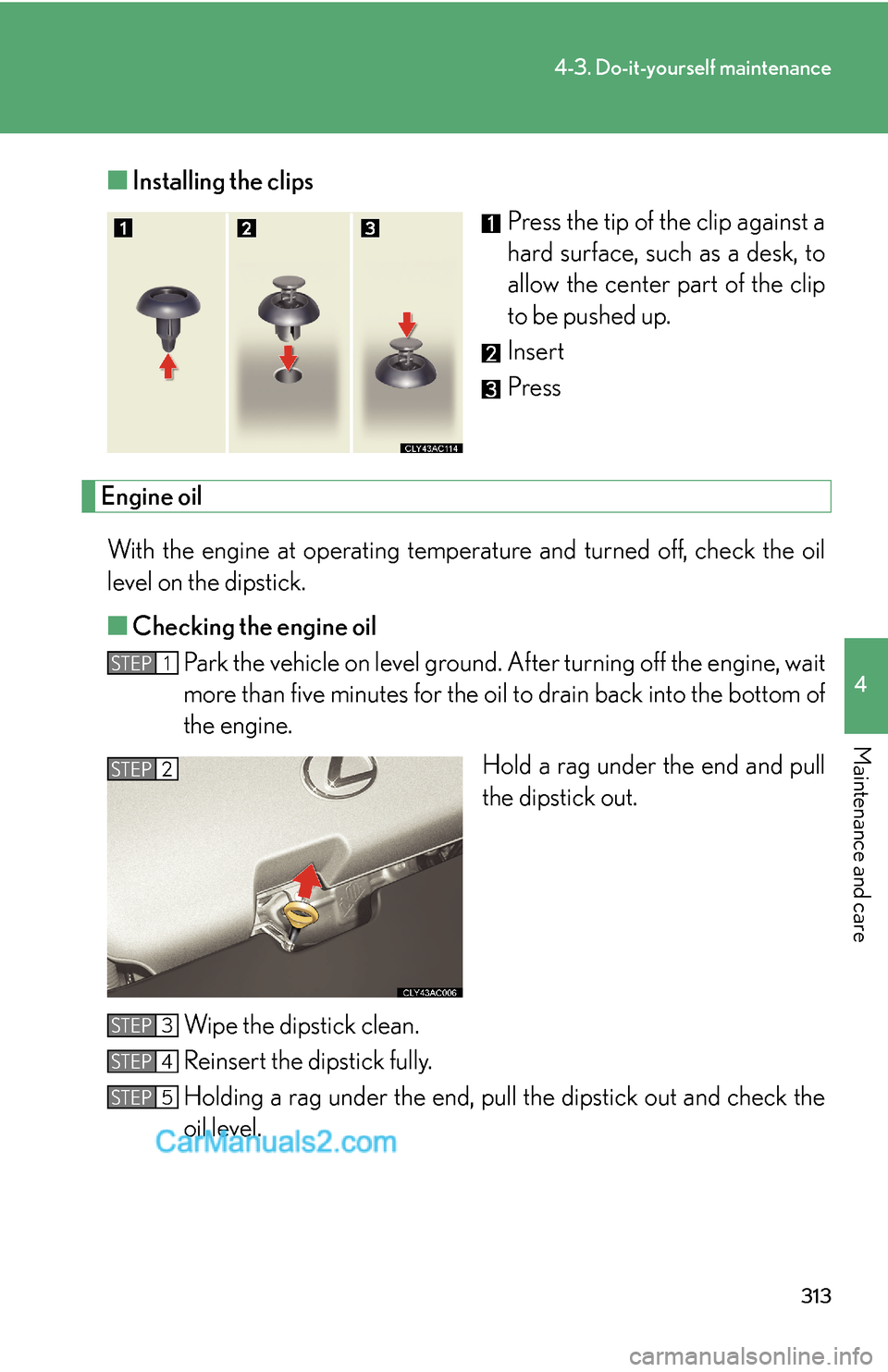
313
4-3. Do-it-yourself maintenance
4
Maintenance and care
■Installing the clips
Press the tip of the clip against a
hard surface, such as a desk, to
allow the center part of the clip
to be pushed up.
Insert
Press
Engine oil
With the engine at operating temperature and turned off, check the oil
level on the dipstick.
■Checking the engine oil
Park the vehicle on level ground. After turning off the engine, wait
more than five minutes for the oil to drain back into the bottom of
the engine.
Hold a rag under the end and pull
the dipstick out.
Wipe the dipstick clean.
Reinsert the dipstick fully.
Holding a rag under the end, pull the dipstick out and check the
oil level.
STEP1
STEP2
STEP3
STEP4
STEP5
Page 11 of 59
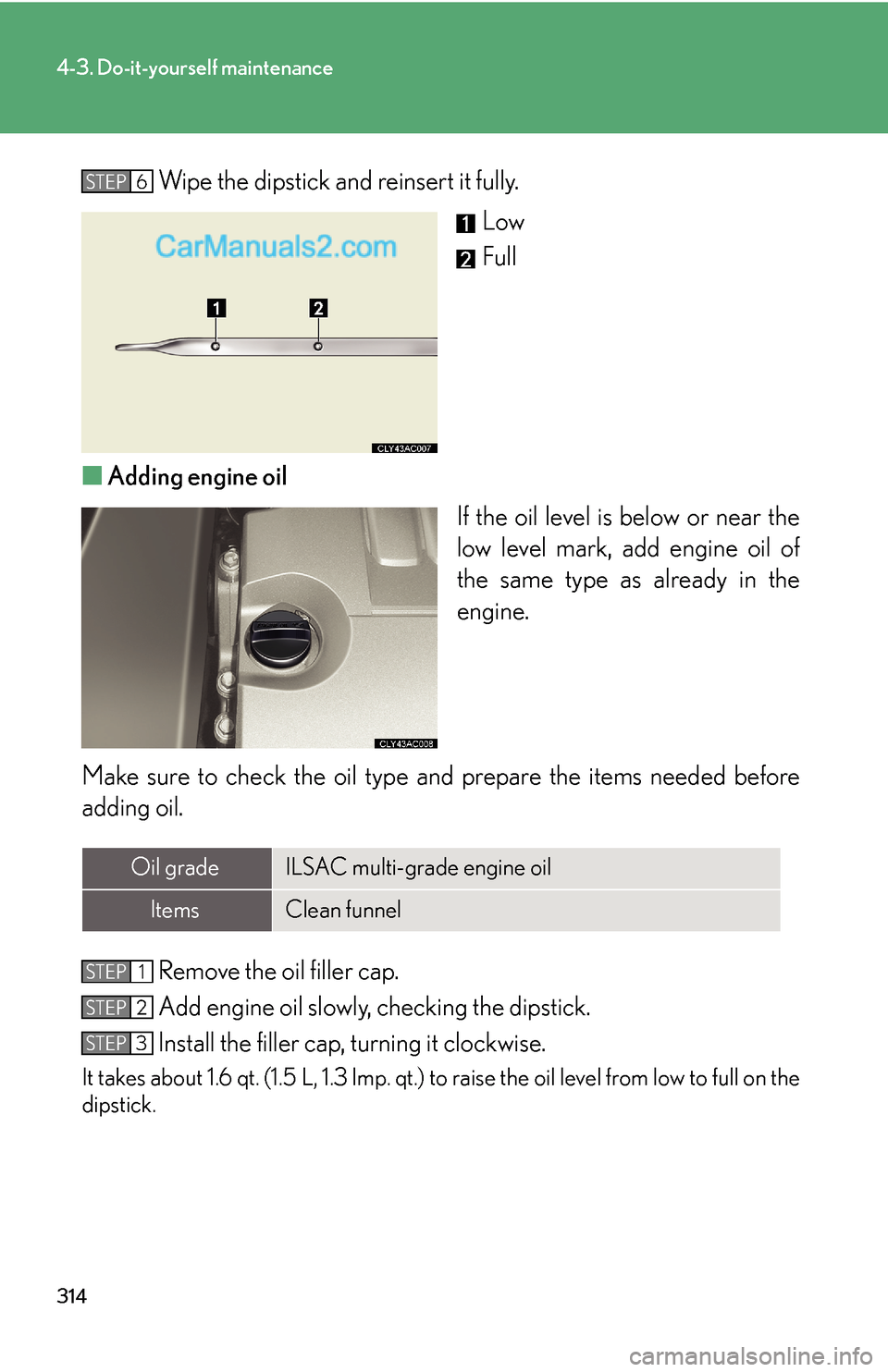
314
4-3. Do-it-yourself maintenance
Wipe the dipstick and reinsert it fully.
Low
Full
■Adding engine oil
If the oil level is below or near the
low level mark, add engine oil of
the same type as already in the
engine.
Make sure to check the oil type and prepare the items needed before
adding oil.
Remove the oil filler cap.
Add engine oil slowly, checking the dipstick.
Install the filler cap, turning it clockwise.
It takes about 1.6 qt. (1.5 L, 1.3 lmp. qt.) to raise the oil level from low to full on the
dipstick.
STEP6
Oil gradeILSAC multi-grade engine oil
ItemsClean funnel
STEP1
STEP2
STEP3
Page 14 of 59
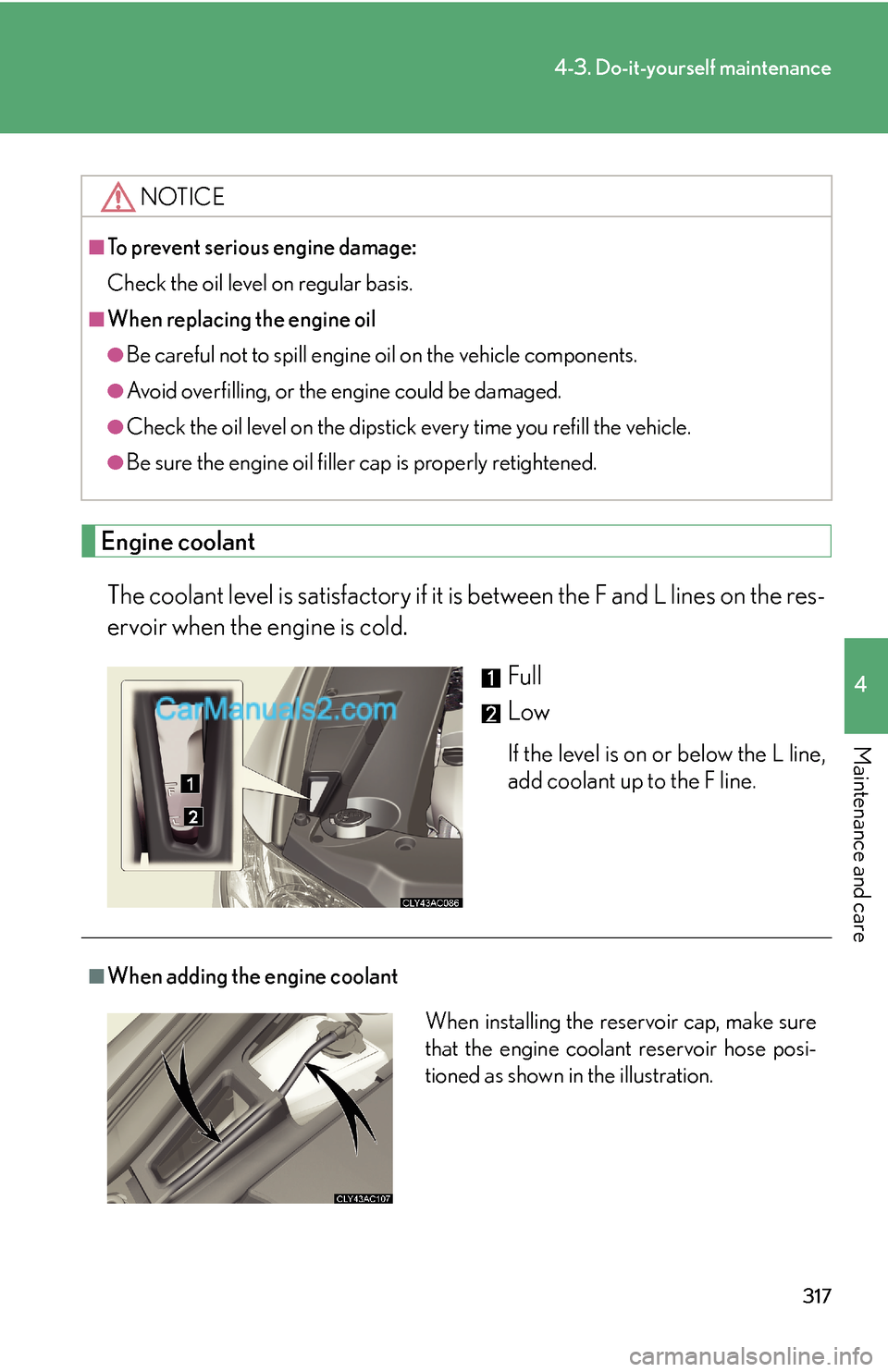
317
4-3. Do-it-yourself maintenance
4
Maintenance and care
Engine coolant
The coolant level is satisfactory if it is between the F and L lines on the res-
ervoir when the engine is cold.
Full
Low
If the level is on or below the L line,
add coolant up to the F line.
NOTICE
■To prevent serious engine damage:
Check the oil level on regular basis.
■When replacing the engine oil
●Be careful not to spill engine oil on the vehicle components.
●Avoid overfilling, or the engine could be damaged.
●Check the oil level on the dipstick every time you refill the vehicle.
●Be sure the engine oil filler cap is properly retightened.
■When adding the engine coolant
When installing the reservoir cap, make sure
that the engine coolant reservoir hose posi-
tioned as shown in the illustration.
Page 15 of 59
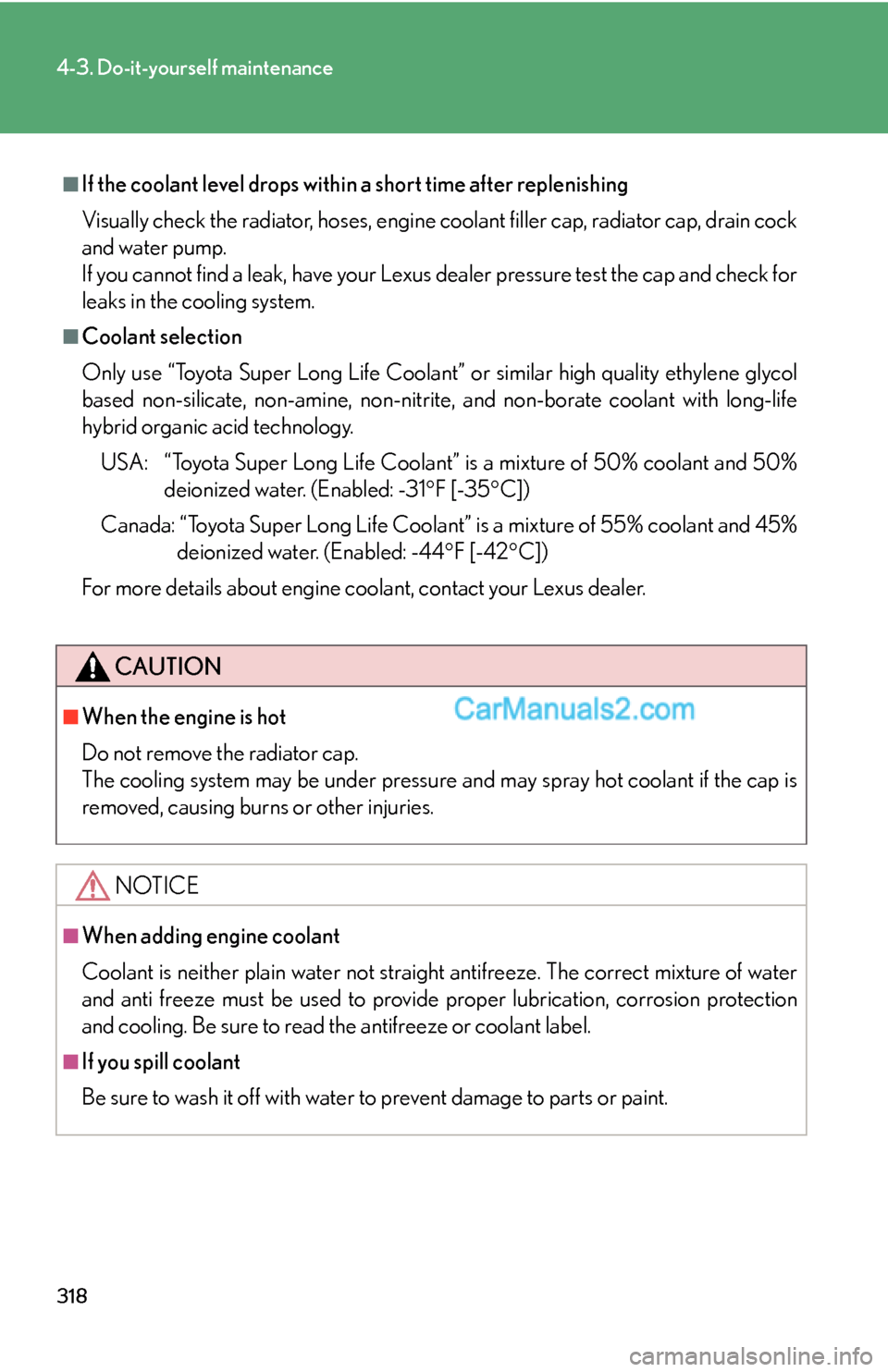
318
4-3. Do-it-yourself maintenance
■If the coolant level drops within a short time after replenishing
Visually check the radiator, hoses, engine coolant filler cap, radiator cap, drain cock
and water pump.
If you cannot find a leak, have your Lexus dealer pressure test the cap and check for
leaks in the cooling system.
■Coolant selection
Only use “Toyota Super Long Life Coolant” or similar high quality ethylene glycol
based non-silicate, non-amine, non-nitrite, and non-borate coolant with long-life
hybrid organic acid technology.
USA: “Toyota Super Long Life Coolant” is a mixture of 50% coolant and 50%
deionized water. (Enabled: -31°F [-35°C])
Canada: “Toyota Super Long Life Coolant” is a mixture of 55% coolant and 45%
deionized water. (Enabled: -44°F [-42°C])
For more details about engine coolant, contact your Lexus dealer.
CAUTION
■When the engine is hot
Do not remove the radiator cap.
The cooling system may be under pressure and may spray hot coolant if the cap is
removed, causing burns or other injuries.
NOTICE
■When adding engine coolant
Coolant is neither plain water not straight antifreeze. The correct mixture of water
and anti freeze must be used to provide proper lubrication, corrosion protection
and cooling. Be sure to read the antifreeze or coolant label.
■If you spill coolant
Be sure to wash it off with water to prevent damage to parts or paint.
Page 16 of 59
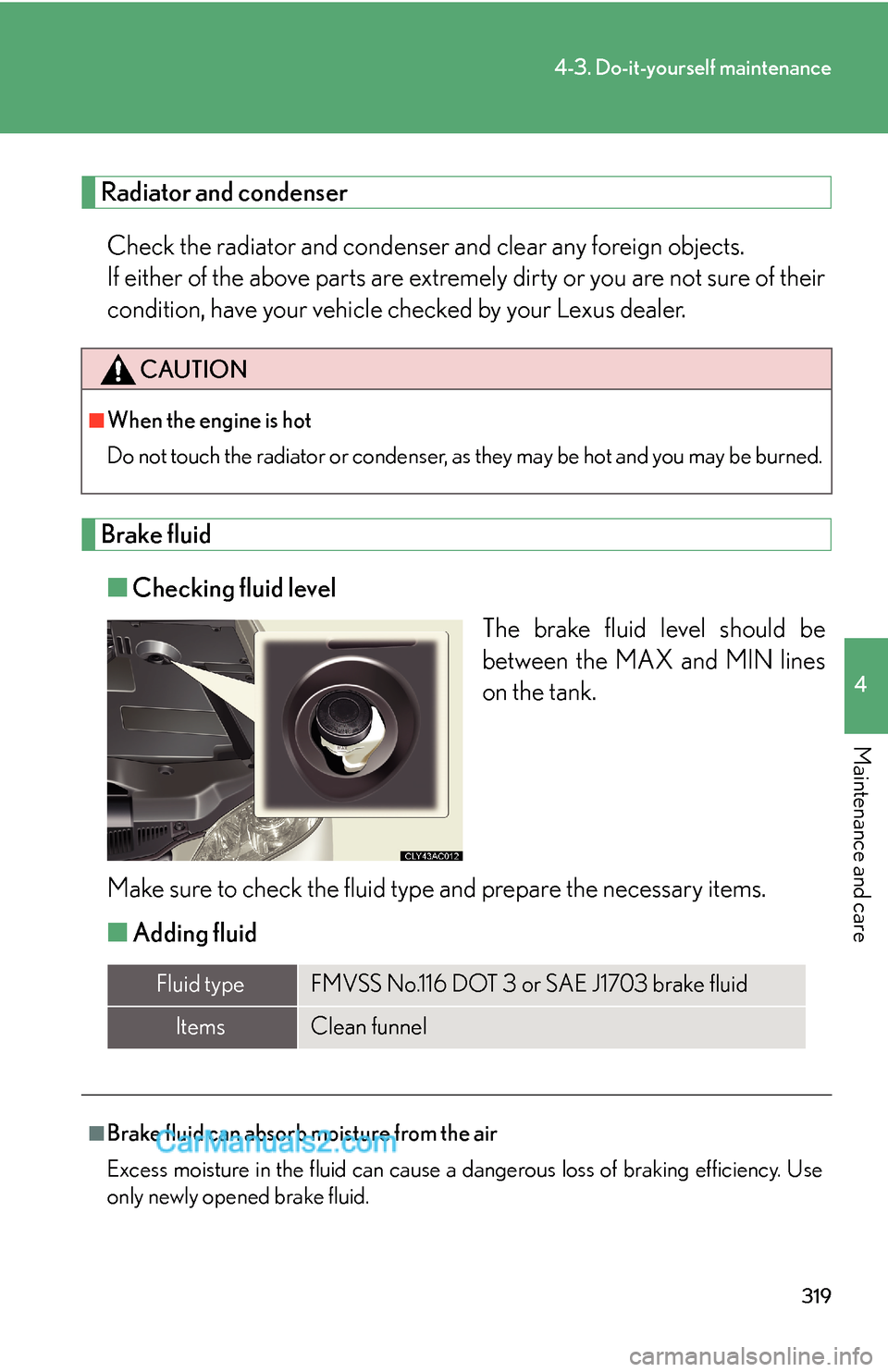
319
4-3. Do-it-yourself maintenance
4
Maintenance and care
Radiator and condenser
Check the radiator and condenser and clear any foreign objects.
If either of the above parts are extremely dirty or you are not sure of their
condition, have your vehicle checked by your Lexus dealer.
Brake fluid
■Checking fluid level
The brake fluid level should be
between the MAX and MIN lines
on the tank.
Make sure to check the fluid type and prepare the necessary items.
■Adding fluid
CAUTION
■When the engine is hot
Do not touch the radiator or condenser, as they may be hot and you may be burned.
Fluid typeFMVSS No.116 DOT 3 or SAE J1703 brake fluid
ItemsClean funnel
■Brake fluid can absorb moisture from the air
Excess moisture in the fluid can cause a dangerous loss of braking efficiency. Use
only newly opened brake fluid.
Page 41 of 59
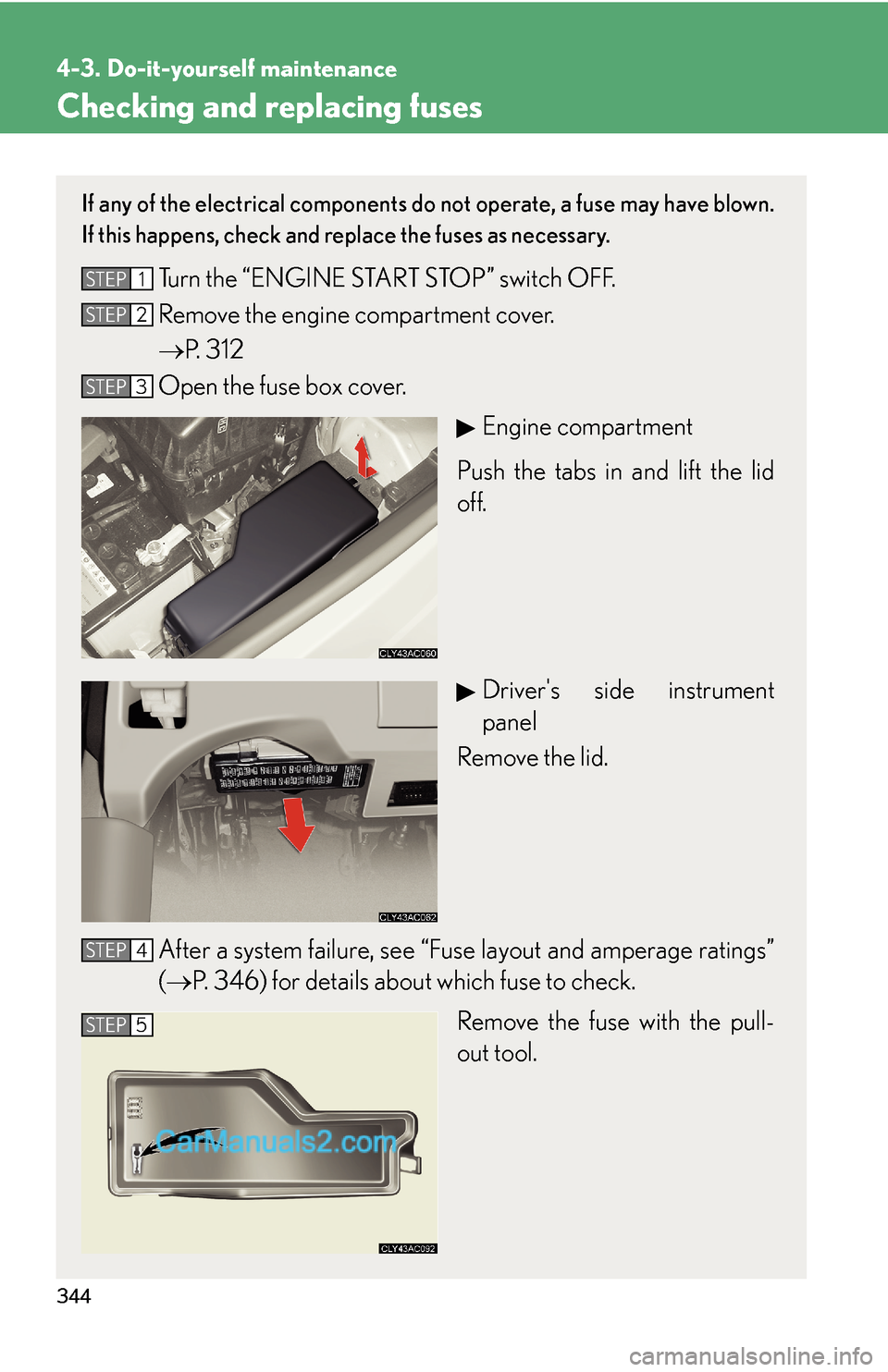
344
4-3. Do-it-yourself maintenance
Checking and replacing fuses
If any of the electrical components do not operate, a fuse may have blown.
If this happens, check and replace the fuses as necessary.
Turn the “ENGINE START STOP” switch OFF.
Remove the engine compartment cover.
→P. 3 1 2
Open the fuse box cover.
Engine compartment
Push the tabs in and lift the lid
off.
Driver's side instrument
panel
Remove the lid.
After a system failure, see “Fuse layout and amperage ratings”
(→P. 346) for details about which fuse to check.
Remove the fuse with the pull-
out tool.STEP1
STEP2
STEP3
STEP4
STEP5
Page 49 of 59
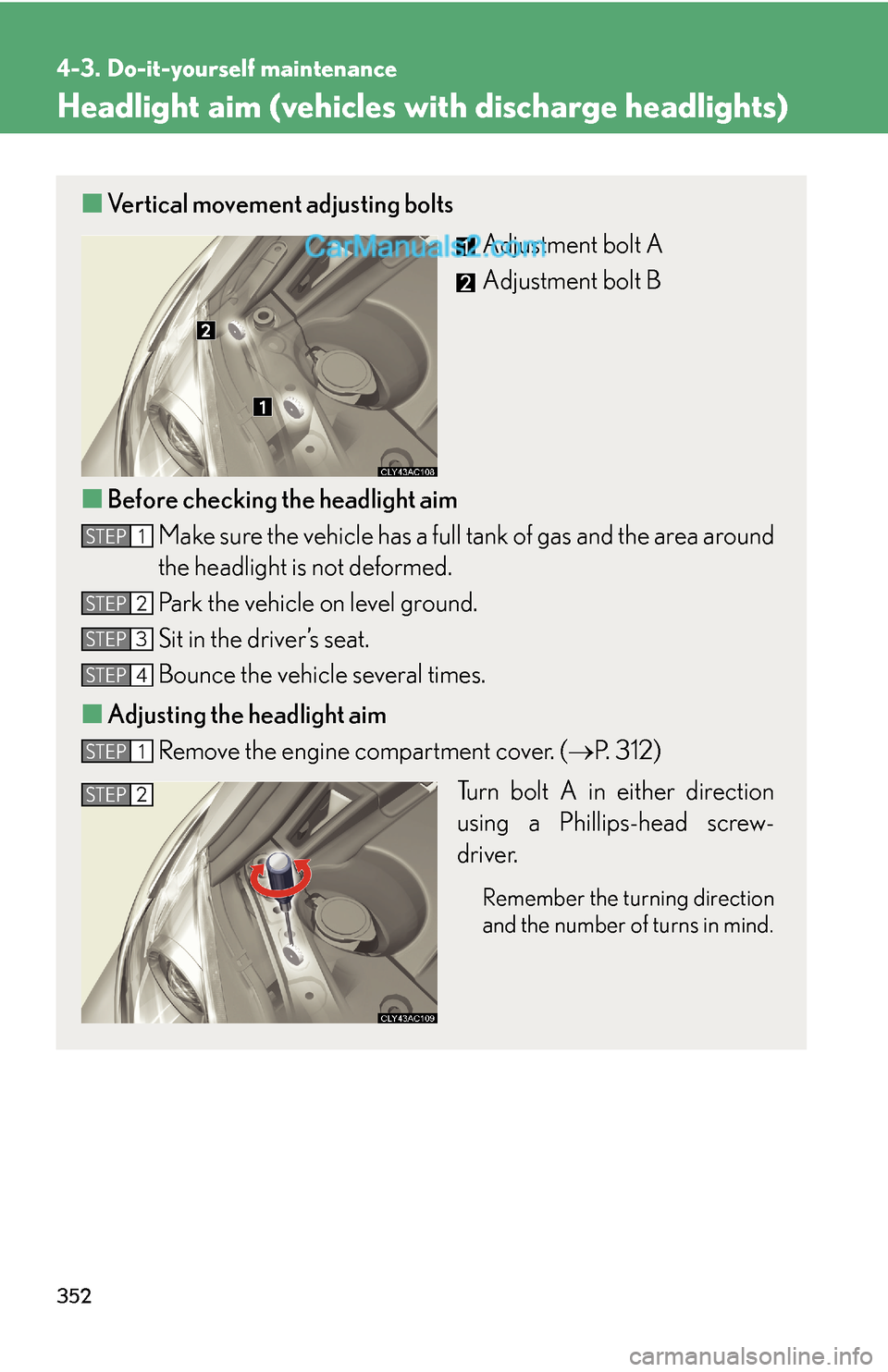
352
4-3. Do-it-yourself maintenance
Headlight aim (vehicles with discharge headlights)
■Vertical movement adjusting bolts
Adjustment bolt A
Adjustment bolt B
■Before checking the headlight aim
Make sure the vehicle has a full tank of gas and the area around
the headlight is not deformed.
Park the vehicle on level ground.
Sit in the driver’s seat.
Bounce the vehicle several times.
■Adjusting the headlight aim
Remove the engine compartment cover. (→P. 312)
Turn bolt A in either direction
using a Phillips-head screw-
driver.
Remember the turning direction
and the number of turns in mind.
STEP1
STEP2
STEP3
STEP4
STEP1
STEP2